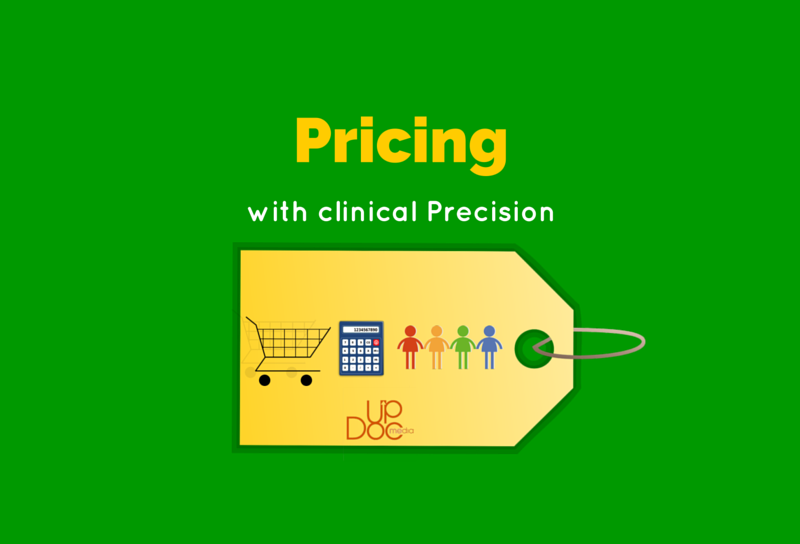

It’s easy to forget the fundamental principles behind marketing, the 4Ps of the Marketing Mix; Product, Price, Place, and Promotion. The hot topic conversations tend to revolve around how businesses are to best promote their products. However, that is just a quarter of what marketing really is. Pricing is just as important, especially considering that too high or too low of a price tends to be an order loser for many customers. Moreover, pricing affects a brand’s image, a brand’s demand curve, and ultimately a brand’s profitability.
Today’s Business Renovations Case Study is….!
Pricing with Clinical Precision
After the necessary steps of market surveying, focusing groups, and gathering a good feel for what the end-user demands a product’s price, it is then incumbent a business to reasonable provide what the market demands of you. But, how do you figure that out? After all, if you survey 100 people, does that mean that majority wins? Is that the best price for your product? Will such a price reflect the best financial results for your firm?
Today, I want to share how you can take the guess work out of your pricing schedules with a mathematical tool on how to price your products with clinical precision.
LINEAR PROGRAMMING.
Linear programming is a way of leveraging data and mathematical models to find the optimal solution in cases such as maximal profit or minimal cost. Most commonly, this is done through Excel via the Excel Solver function.
Perhaps the easiest way to precisely price your products is first creating a demand curve. You can create a simple linear model by asking your customers how much they would be willing to pay for a number of your products at a time at range of prices from free to something unreasonably high. What you should get is something approximately linear that looks like this:
For tips on how to create this curve and some other data functions, please visit our blog post and case study on Analyzing Marketing Returns.
Once your demand curve is created, use the linear equation for your demand curve model and determine your production capacity. Also, be sure to relate your revenue cell as a product of price and demand. Input these pieces of data into a separate section of your spreadsheet like so:
In this example, we used a theoretical production capacity of 40. This means, this company cannot satisfy a demand greater than 40. For the conditions of this solver, we also need to constrain the program to consider only positive demand and a maximal revenue condition. Under Data Analysis & Solver, you can control your constraints like so:
Using these parameters, I’m ensuring that the automatic solver calculations do not consider numbers where price is negative, demand is negative, or that demand is greater than the production capacity — after all, why consider demand if you can’t produce such a level?
Hit the Solve button and enjoy the show! For this example, you should get:
This means that for this particular product line, the optimum price for revenue is $5.50. This will create a demand of roughly 27 per time period drawing in a revenue of $151.25. If you doubt the results, you can perform a sanity check by inputting different numbers above and below the calculated price. You should find that the revenue will still be lower even at a higher or lower price point.
And, just like that, you have priced your product with clinical precision.
So, how did this case unfold in real life? The pricing was for a wellness service line to be provided outside the framework of healthcare — more so aligned with the fitness industry. The problem was that despite other counterparts within the profession doing very well with their own wellness programs, this firm was struggling to gather any business at all. It was a true frustration in marketing.
A quick case consultation revealed two fundamental marketing woes: (1) The business did not perform a market survey for consumer demand, and, (2) the price of their wellness service was far too high for their market.
Fixing these two elements proved a very quick return on investment. Not only did this firm understand their market more intimately and accurately, they were able to find the precise price point to optimize their revenue stream for this product line. It was a quick and easy win across the board as they quickly penetrated the market and added to their profit pool a sustainable cash cow — always a welcome aspect in any business.
Pricing can be a challenging aspect of marketing to precisely address. It is easy just to take a relative look at market positioning and guesstimate your brand’s price. However, this can lead to a severe bullwhip effect leading to decreased brand equity loss of market share and revenue.
Pricing analyses can be performed across numerous product and service lines, all with their own production and resource constraints. What is amazing about such an analysis is not only the precision but the direction that the solutions also come with. A pricing analysis not only reveals the numeric direction for your company’s finances, it can also unveil some hidden truths on the strategic direction your company should adopt going forward.
I highly recommend that every firm conducts a pricing analysis as part of their marketing strategy in regular intervals so that they avoid disruption, substitution, and other marketplace threats.
If you think your company could benefit from such an analysis, please let us know! We are here to serve as accelerators of your success and our journey begins with a careful look at your situation, together. For more information, please visit Business Renovations.
Thank you for reading this post from October of 2015. UpDoc Media has since shifted from Business Renovations and now offers a Digital Media & Content Marketing service called POWERED By UpDoc Media. Woven into this service includes management consulting as well as business coaching.














